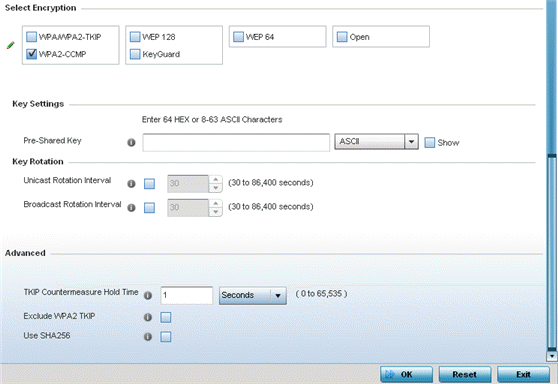WPA2-CCMP
About this task
WPA2/CCMP is based on the concept of a RSN (Robust Security Network), which defines a hierarchy of keys with a limited lifetime (similar to TKIP). Like TKIP, the keys the administrator provides are used to derive other keys. Messages are encrypted using a 128-bit secret key and a 128-bit block of data. The end result is an encryption scheme as secure as any a controller, service platform or Access Point provides for its connected clients.
To configure WPA2-CCMP encryption on a WLAN:
Procedure
What to do next
- WPA2-CCMP should be configured for all new (non-visitor) WLANs requiring encryption, as it‘s supported by the majority of the hardware and client vendors using wireless networking equipment.
- WPA2-CCMP supersedes WPA-TKIP and implements all the mandatory elements of the 802.11i standard. WPA2- CCMP introduces a new AES-based algorithm called CCMP which replaces TKIP and WEP and is considered significantly more secure.


